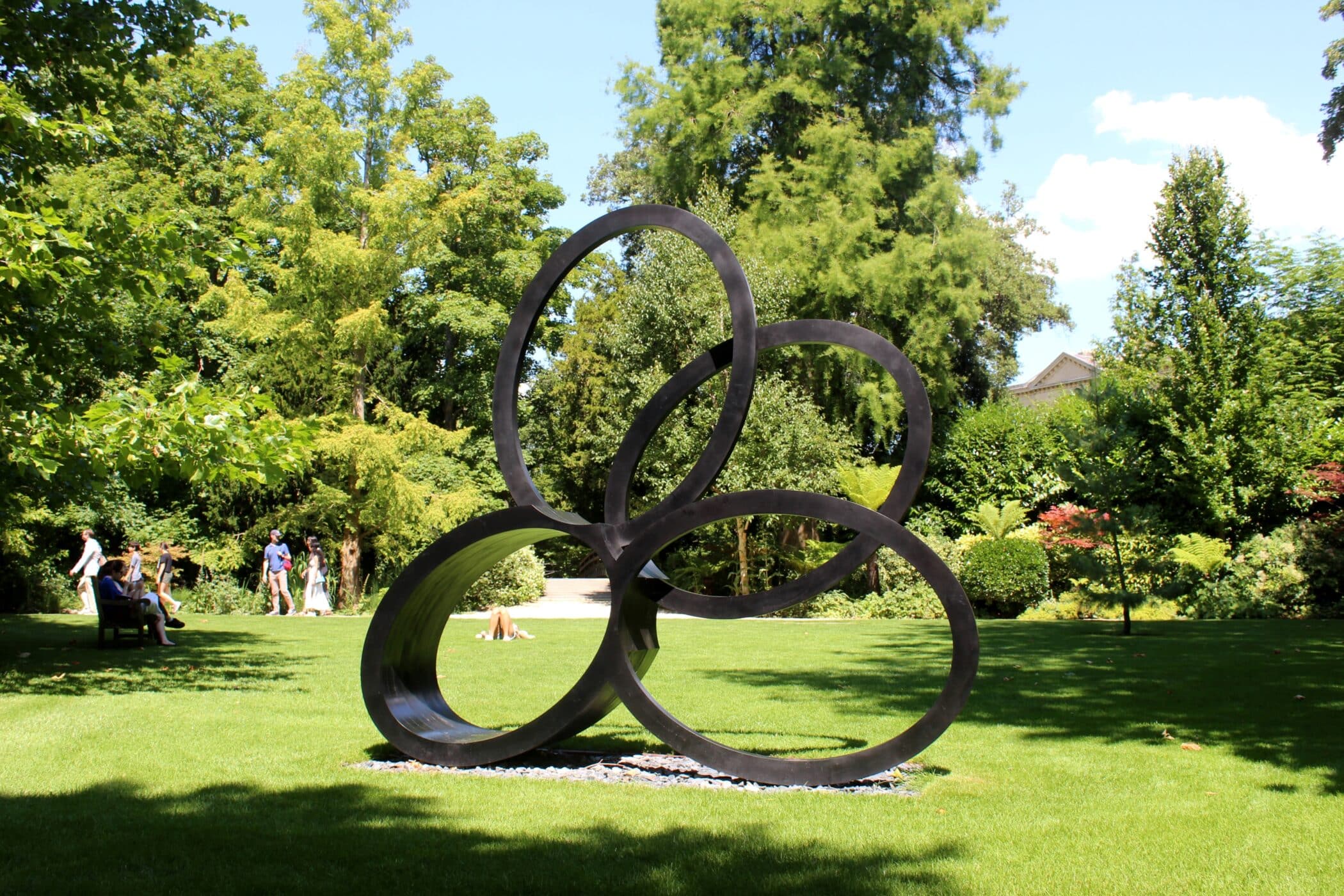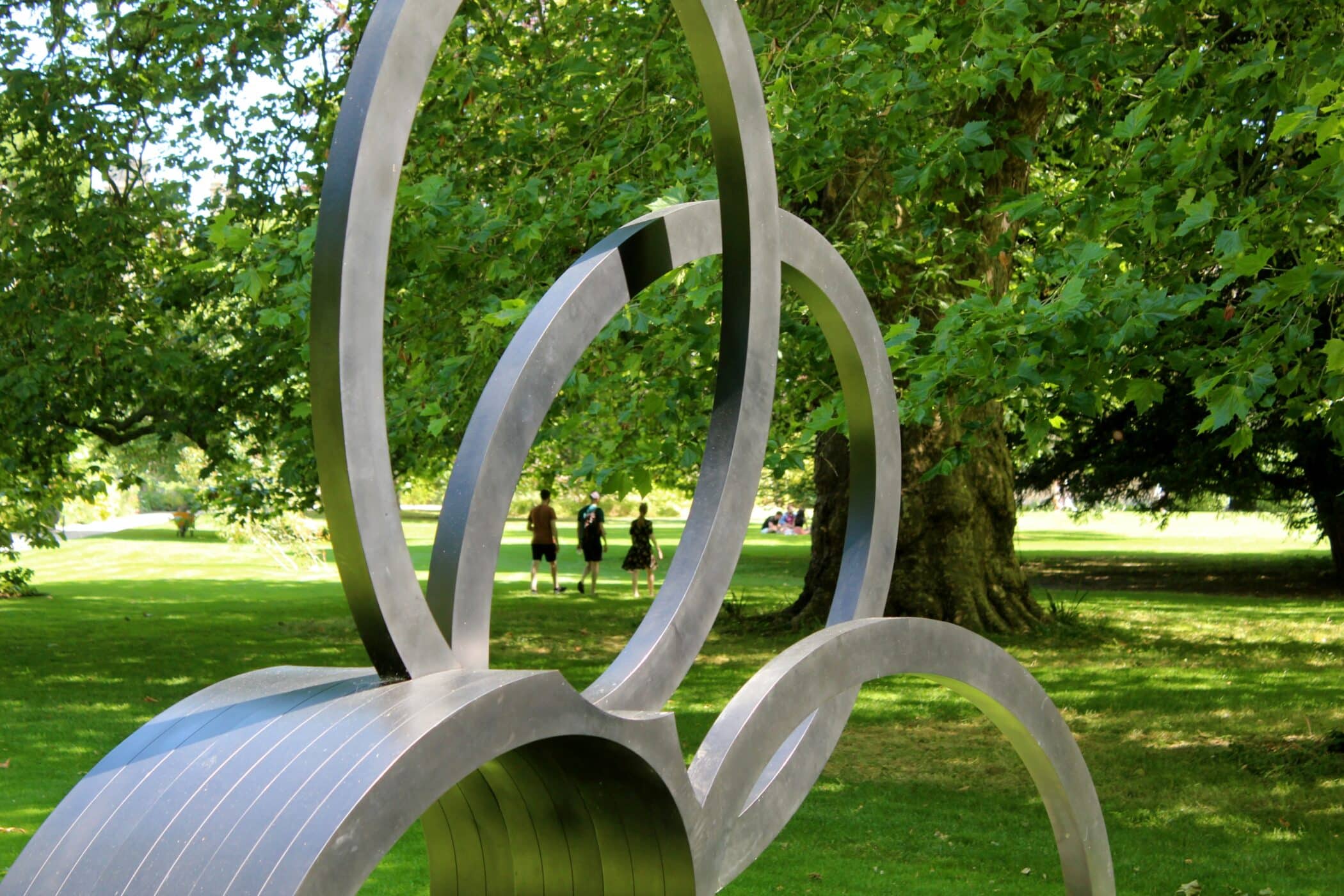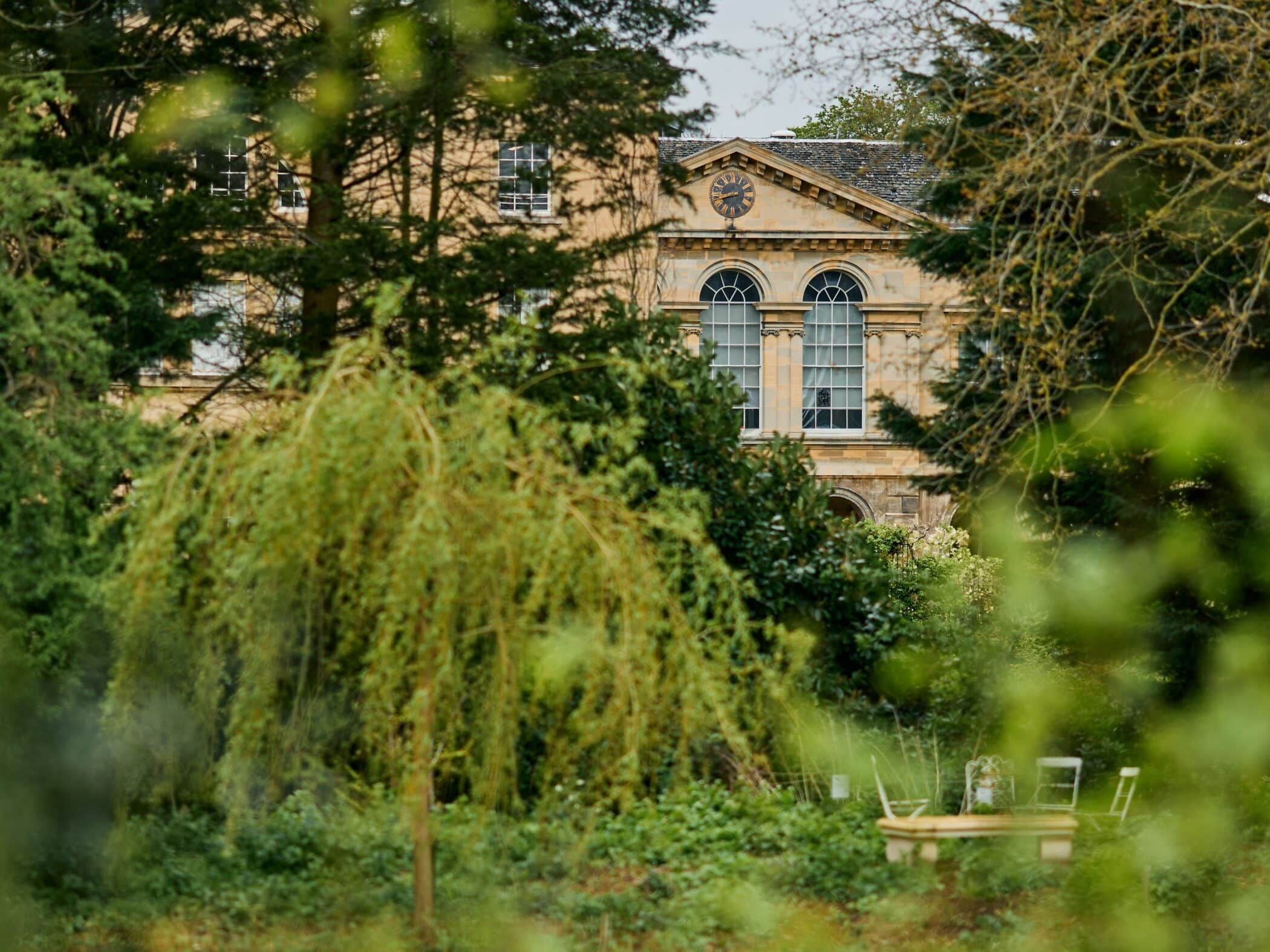Henry Moore at Worcester
'Reclining Figure' (1982) by Henry Moore
On loan from the Henry Moore Foundation courtesy of the Barrie and Deedee Wigmore Foundation.
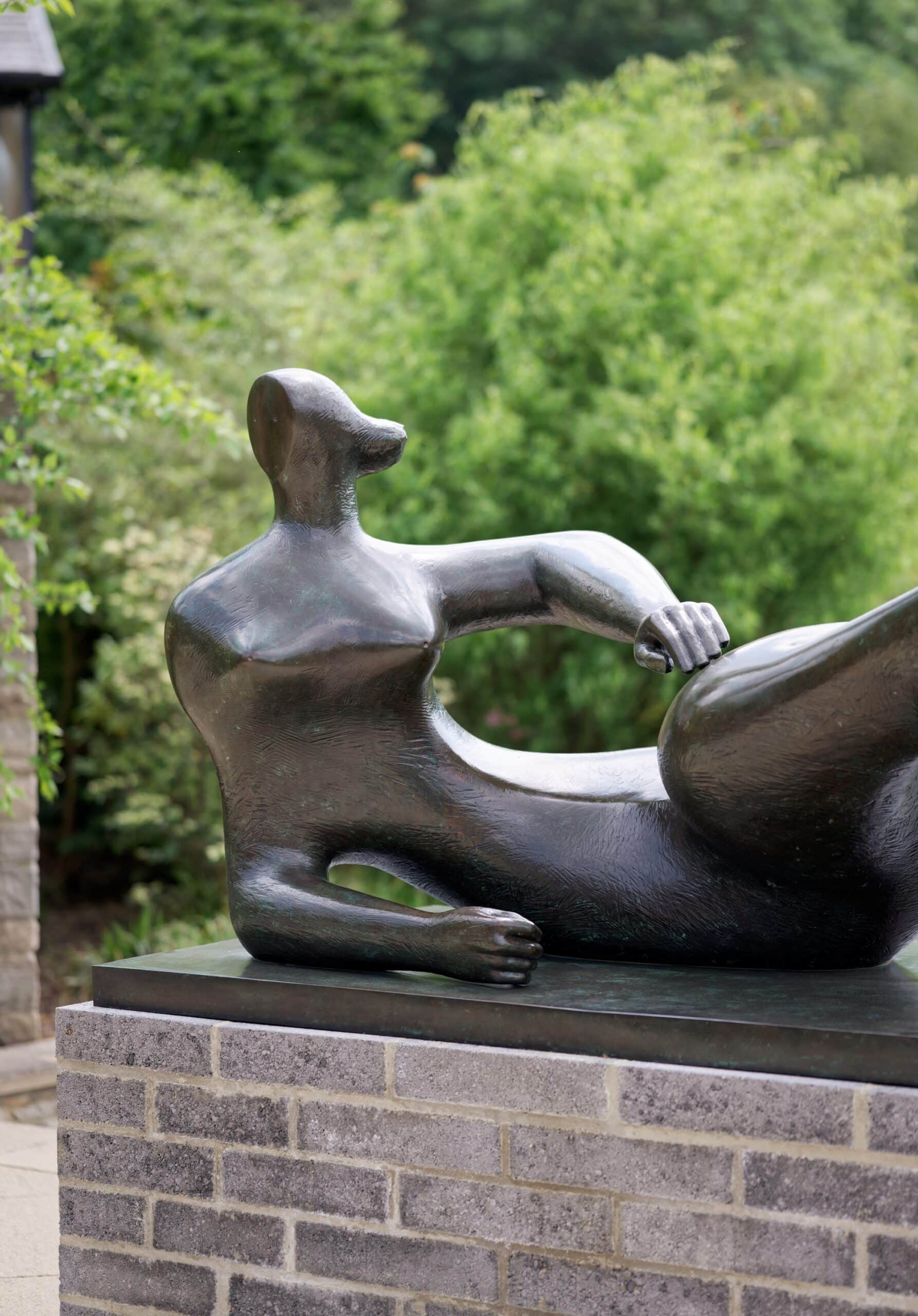
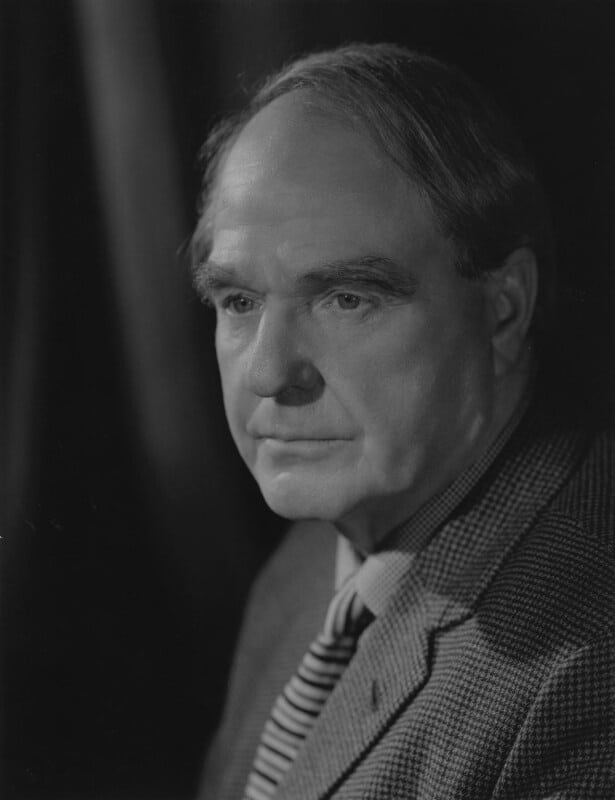
Henry Moore photographed by Walter Bird, 1963 (National Portrait Gallery)
Born to a working-class family in Castleford, West Yorkshire, Henry Moore rose to be a global star within his own lifetime.
He was one of the leading British artists of the twentieth century and pioneered a modernist visual language which became synonymous with post-war sculpture. Moore welcomed public commissions, regarding them to be his civic duty as an artist, and today his monumental bronzes can be seen around the world, from Argentina to New Zealand.
'Reclining Figure' was made when Moore was 84 but his interest in the theme stretched back six decades to his earliest days as a sculptor.
He was particularly drawn to the form of the reclining figure – over sitting or standing – because of the spatial freedom it afforded him. This instantly recognisable pose gave Moore the opportunity to move beyond a naturalistic depiction of the figure, allowing him instead to experiment with form and the sculptural construction of bodies in space.
Inspired by the past
Images and carvings of reclining figures have a long history in Western art. But for Moore, as well as other modernist artists, this Greco-Roman tradition played a marginal role when compared to sculpture from Africa, Asia and Central America. From the 1920s, pre-Columbian Chacmool sculptures from Mexico were fundamental to Moore’s understanding of the reclining form. With their heads turned ninety degrees to the side and their legs drawn up from the ground, Moore admired the inventive form and weighty power of these stone figures, describing an example from the Maya city of Chichen Itzá as 'about as good a piece of sculpture as I know.'
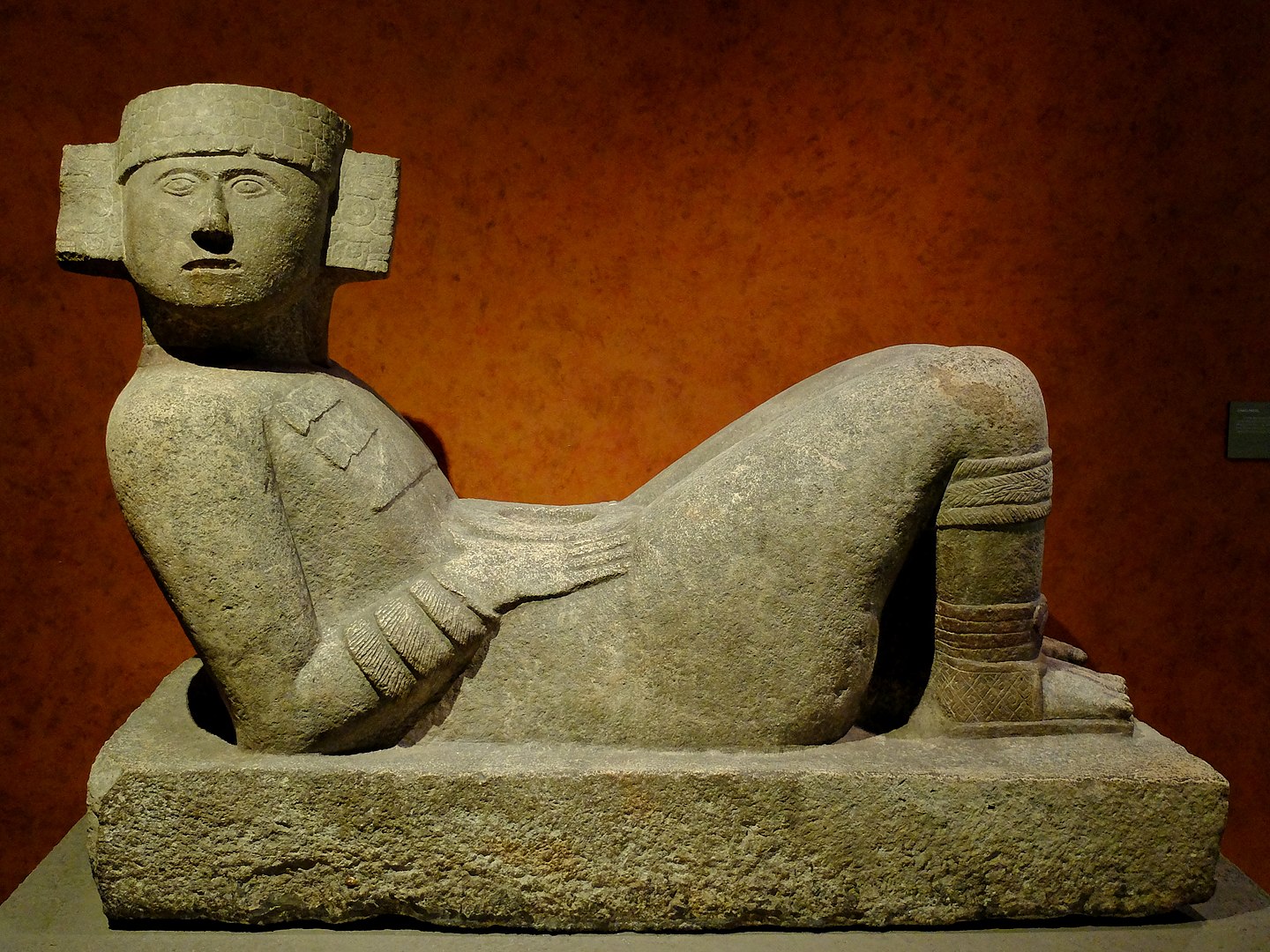
Maya chacmool from Chichen Itzá (Ziko van Dijk)
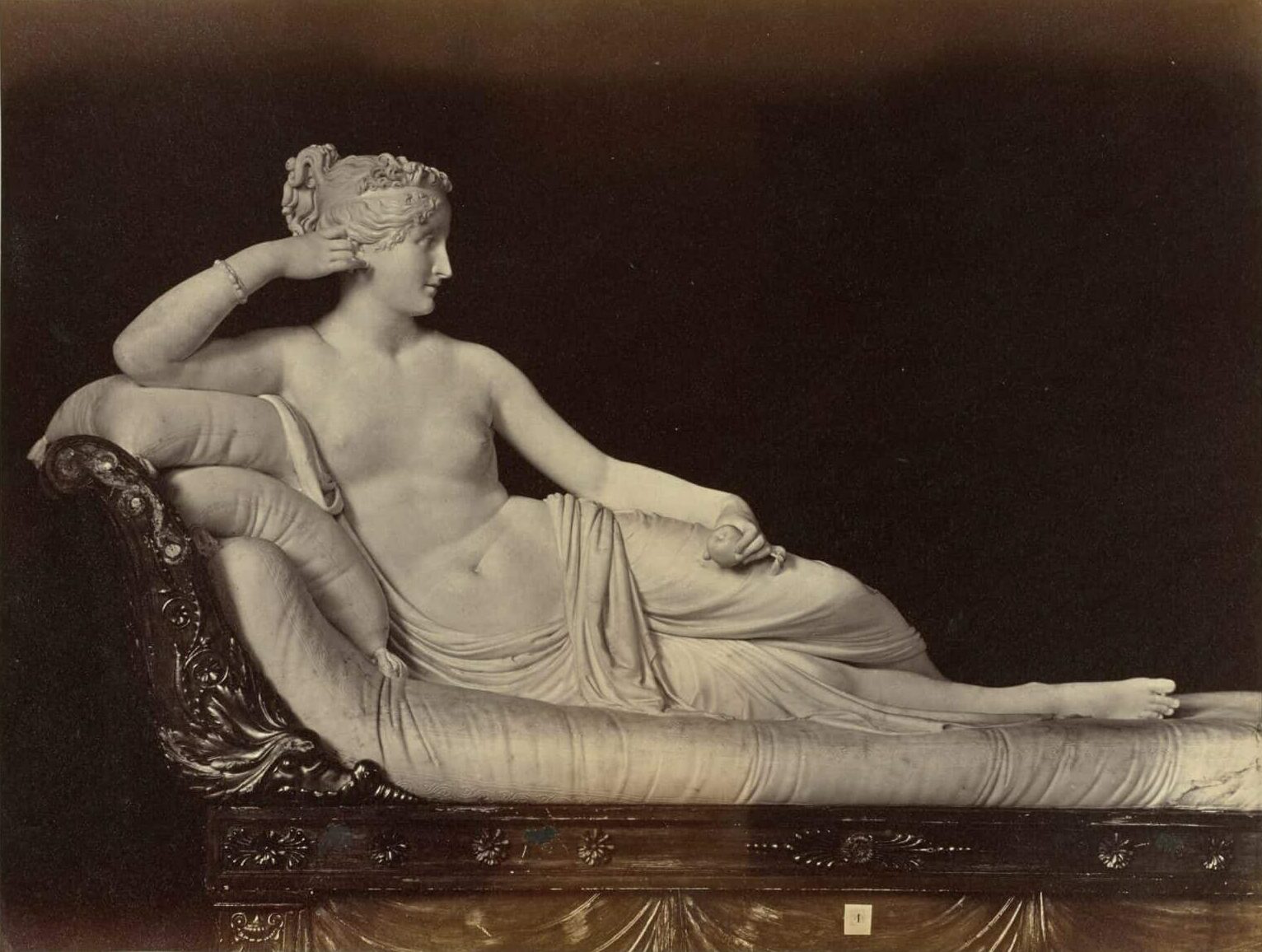
Canova's 'Pauline Borghese as Venus Victrix' photographed in 1895
For his monumental bronzes, Moore often produced a small three-dimensional maquette and a larger working model in plaster.
These models were used to cast a set of final sculptures in bronze. Worcester College owns a bronze cast of Maquette for Mother and Child which was purchased from Moore by the JCR Art Fund on a visit to his Hertfordshire studios in 1952. This maquette was loaned to the Wellcome Collection in London for their exhibition 'Milk' in 2023.
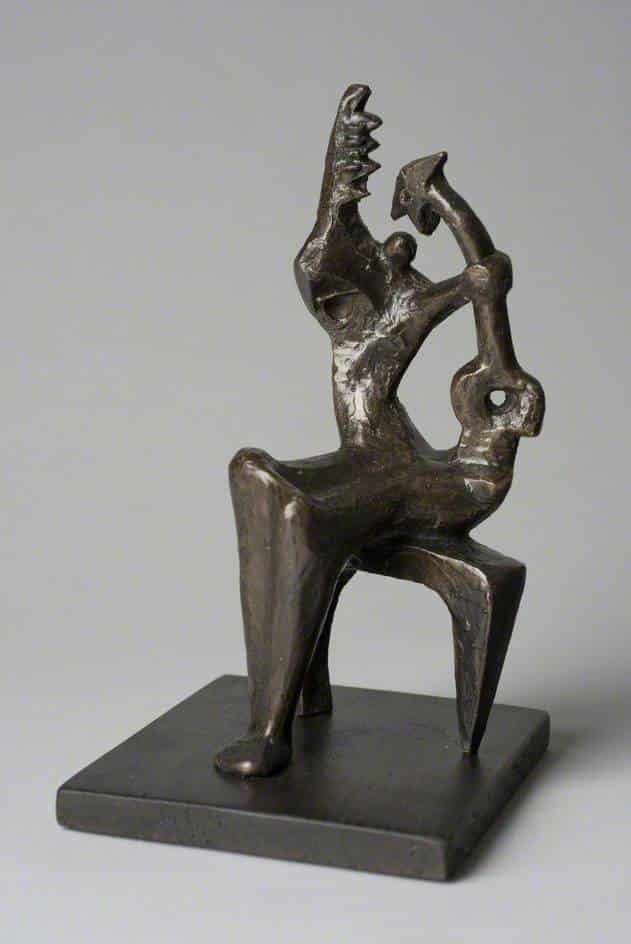

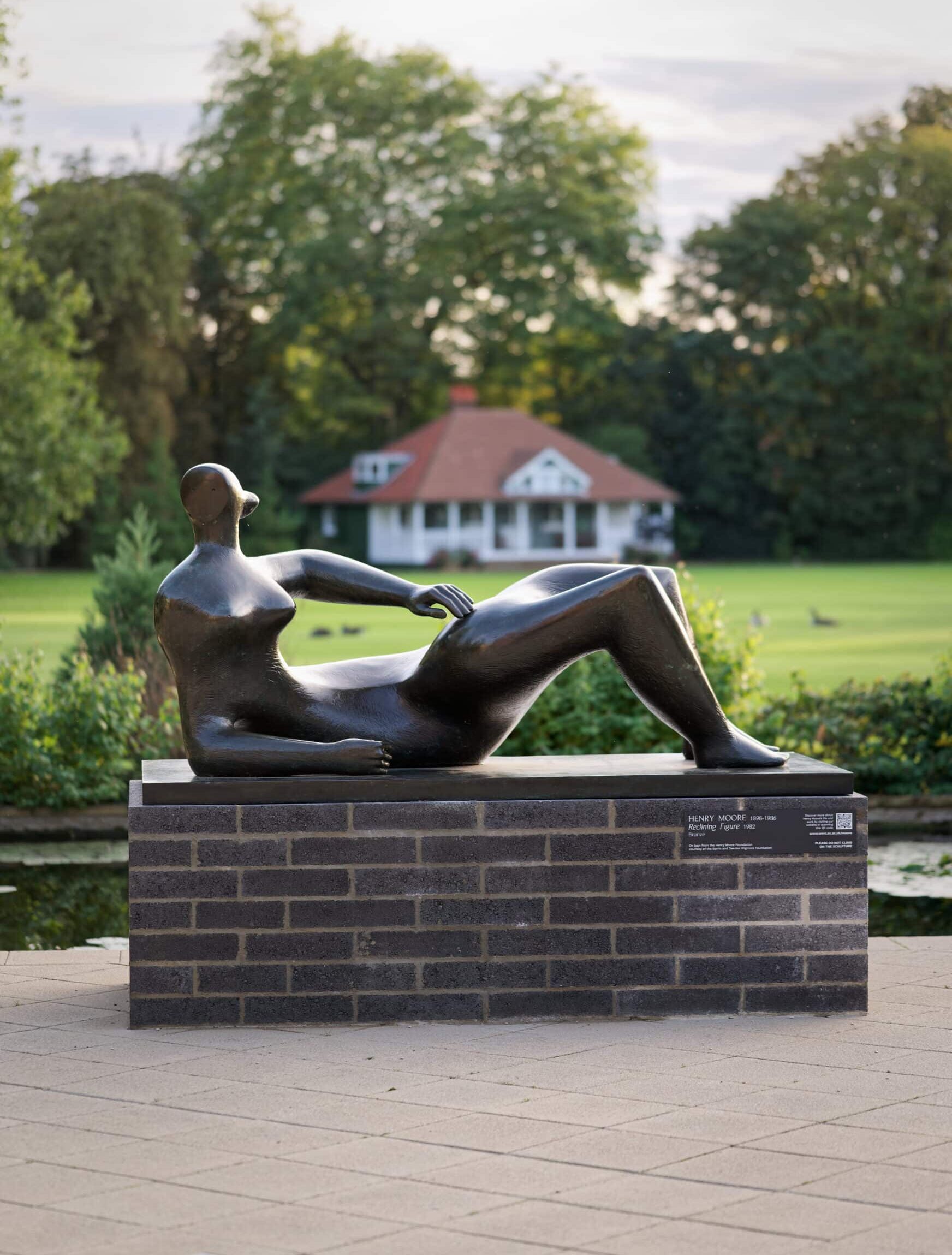
'Reclining Figure' at Worcester









